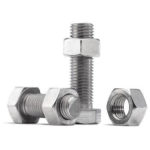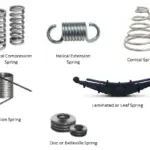Consider two governors ‘A’ and ‘B’ rotating with the same speed. If there is a fluctuation
in their speed i.e. their speeds increases (or decreases) by a certain amount. The lift (or fall) of sleeve of governor ‘A’ is larger than the lift (or fall) of sleeve of
governor ‘B’. Then we can say that governor ‘A’ is more sensitive than governor
‘B’.
in their speed i.e. their speeds increases (or decreases) by a certain amount. The lift (or fall) of sleeve of governor ‘A’ is larger than the lift (or fall) of sleeve of
governor ‘B’. Then we can say that governor ‘A’ is more sensitive than governor
‘B’.
A more
sensitive governor is one which shows maximum variation in its configuration
(lift or fall of the sleeve) for minimum fluctuation in their speeds. The
sensitiveness of a governor can be increased by decreasing its speed range.
sensitive governor is one which shows maximum variation in its configuration
(lift or fall of the sleeve) for minimum fluctuation in their speeds. The
sensitiveness of a governor can be increased by decreasing its speed range.
The above
definition of the sensitiveness is applied when the governor is considered as
an independent mechanism but in the case when it is fitted to an engine, Then the
sensitiveness of the governor is defined as the ratio of the difference between the maximum and
minimum equilibrium speed to the mean equilibrium speed.
definition of the sensitiveness is applied when the governor is considered as
an independent mechanism but in the case when it is fitted to an engine, Then the
sensitiveness of the governor is defined as the ratio of the difference between the maximum and
minimum equilibrium speed to the mean equilibrium speed.
Let, N1
= Minimum equilibrium speed,
= Minimum equilibrium speed,
N2
= Maximum equilibrium speed, and
= Maximum equilibrium speed, and
N
= Mean equilibrium speed = (N1 + N2)/2
= Mean equilibrium speed = (N1 + N2)/2
Therefore,
Sensitiveness of the governor
=
(N2 – N1)/N
(N2 – N1)/N
=
2(N2 – N1)/ (N1
+ N2)
2(N2 – N1)/ (N1
+ N2)
=
2(ω2 – ω1)/ (ω1 + ω2)
2(ω2 – ω1)/ (ω1 + ω2)









But somewhere senstiveness is equal to mean speed / range of speed
why ?